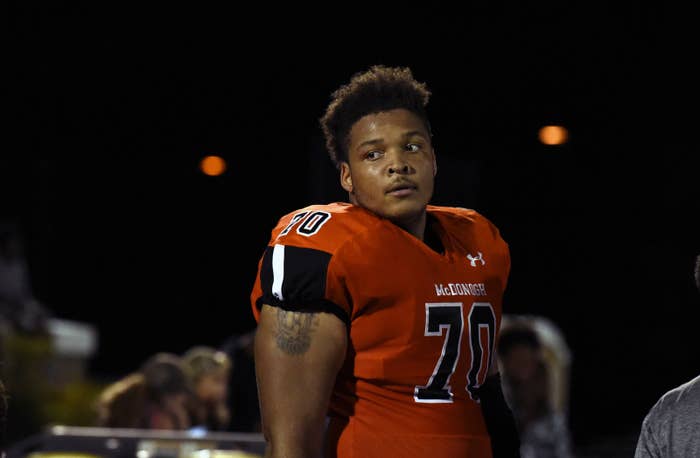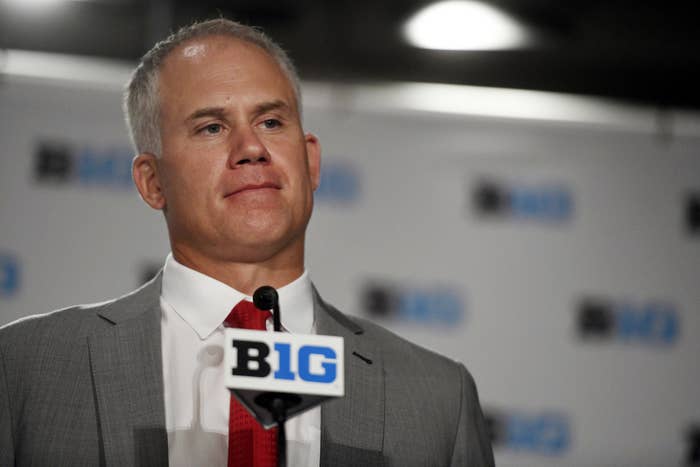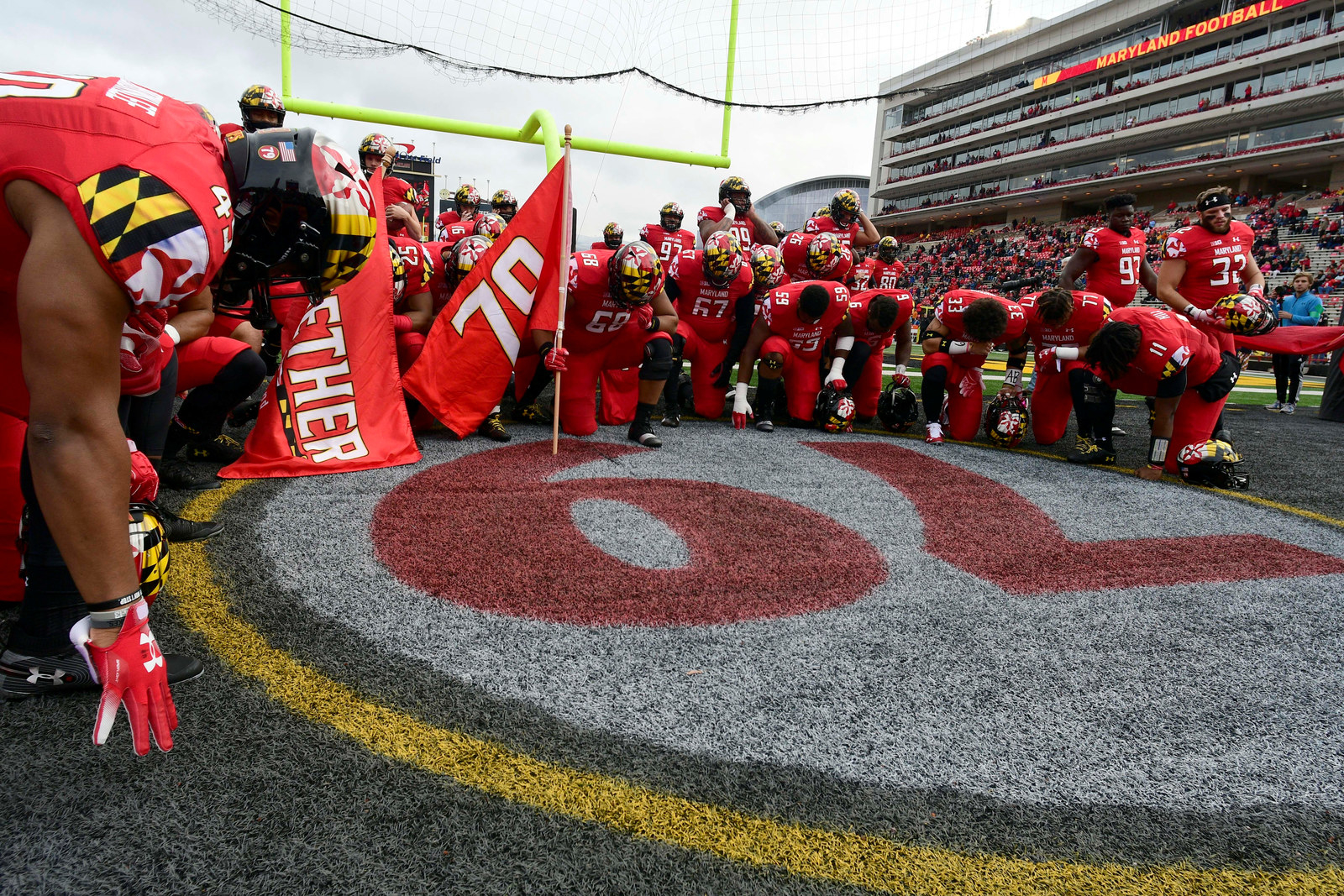
The University of Maryland on Wednesday fired football coach DJ Durkin, a day after he was reinstated following an investigation into the school’s athletic culture, prompted by a player's death last spring.
Durkin was placed on administrative leave in August while the probe into the football team’s culture was underway. The investigation came after 19-year-old University of Maryland student Jordan McNair suffered a heatstroke and collapsed during a team practice in May and died several days later.
On Tuesday the university’s president, Wallace D. Loh, issued a statement saying that the University System of Maryland Board of Regents had recommended Durkin return to his coaching duties, and noting that the review of the football program found the “team did not have a ‘toxic culture.’”
The decision to reinstate Durkin was met with ire from students and lawmakers, including Maryland Gov. Larry Hogan, who said in a statement that he was “deeply troubled by the lack of transparency.”
“While the university system is required by law to operate independent of political influence, and as such no governor has the ability to hire or fire any university personnel or members of the Board of Regents, I can and will demand that the university is held accountable for making the reforms they have pledged to put in place with the full transparency that the students, parents, and faculty expect and deserve,” Hogan said.

Jonathan Allen, the president of the university’s Student Government Association, said the decision not to fire Durkin “indicates that the Board of Regents prioritizes profits over the lives of students.”
Allen said he had met with Loh, the university president, to express the student body’s outrage at Durkin’s reinstatement, and to reiterate demands that the football coach be fired.
Ellis McKennie, one of McNair’s teammates, tweeted a photo of the team Tuesday, saying, “Every Saturday my teammates and I have to kneel before the memorial of our fallen teammate. Yet a group of people do not have the courage to hold anyone accountable for his death. If only they could have the courage that Jordan had.”
Every Saturday my teammates and I have to kneel before the memorial of our fallen teammate. Yet a group of people do not have the courage to hold anyone accountable for his death. If only they could have the courage that Jordan had. It’s never the wrong time to do what’s right. https://t.co/AaZVmLGTtS
By Wednesday, the university had reversed its decision, saying that firing Durkin “is in the best interest of the university.”
Hundreds of students had planned a two-day protest over Durkin’s reinstatement, demanding justice for McNair, according to the Baltimore Sun. It is unclear if the protest will still happen now that the coach has been fired.
Loh said that since Tuesday he has spoken to a number of students and faculty who “expressed serious concerns about Coach DJ Durkin returning to the campus.”
“This is not at all a reflection of my opinion of Coach Durkin as a person,” Loh said Wednesday. “However, a departure is in the best interest of the University, and this afternoon Coach Durkin was informed that the University will part ways.”

Last month, the university released the results of an independent investigation into McNair’s death, which found that more than an hour had passed before a trainer called 911 after the player first showed symptoms of heatstroke.
According to the report, McNair was taken off the field at 5:22 p.m. on May 29 — more than 30 minutes after he complained he was having cramps. In the locker room, athletic training staff tried cooling him down with wet towels.
The university’s head football athletic trainer told investigators that staff decided not to use a cold whirlpool to cool McNair because there was fear of his drowning “due to the concern of size of the student-athlete and the smaller stature of the athletic trainers providing care.”
In the locker room McNair “suddenly demonstrated drastic mood changes,” including yelling at the trainers — a sign of heatstroke. Almost 30 minutes passed in the locker room before staff called 911.
“The failure to rapidly recognize exertional heat illness is a concern,” the report stated. “The lack of recognition and assessment of the severity of the event delayed cooling the patient in a timely manner.”
“Even if the symptoms were not identified on the field, if core temperature had been assessed with the change in mental status at 17:50 p.m., there might have been the opportunity to reverse the patient’s core temperature,” the report said.
